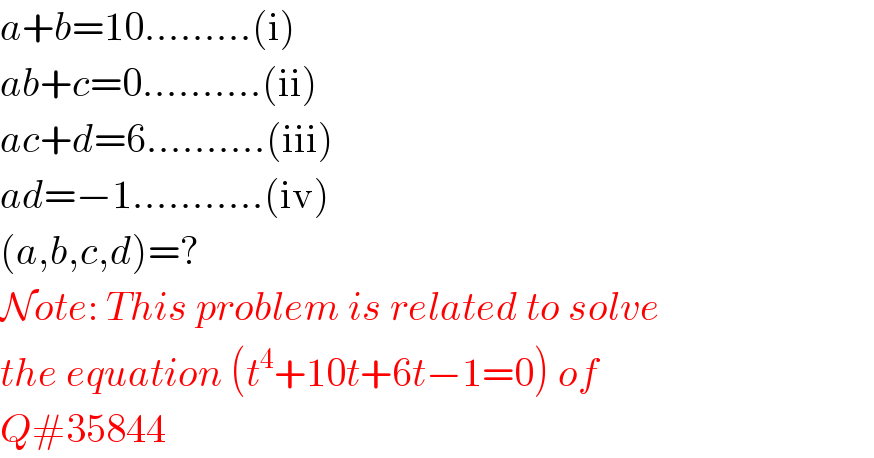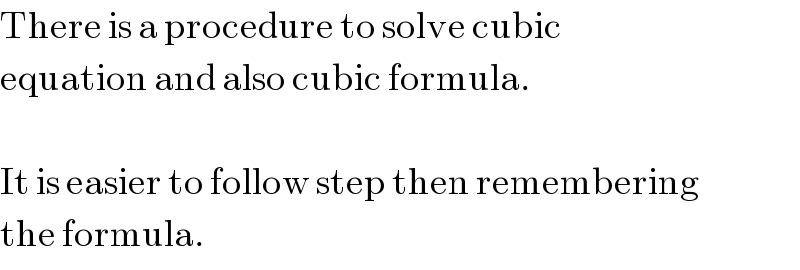
Question and Answers Forum
Question Number 36132 by Rasheed.Sindhi last updated on 29/May/18

Commented by Rasheed.Sindhi last updated on 29/May/18

Commented by prakash jain last updated on 29/May/18

Commented by mondodotto@gmail.com last updated on 29/May/18

Commented by prakash jain last updated on 29/May/18
http://www.sosmath.com/algebra/factor/fac11/fac11.html
Commented by Rasheed.Sindhi last updated on 29/May/18

Commented by MJS last updated on 29/May/18

Commented by Rasheed.Sindhi last updated on 30/May/18

